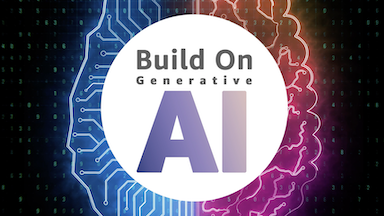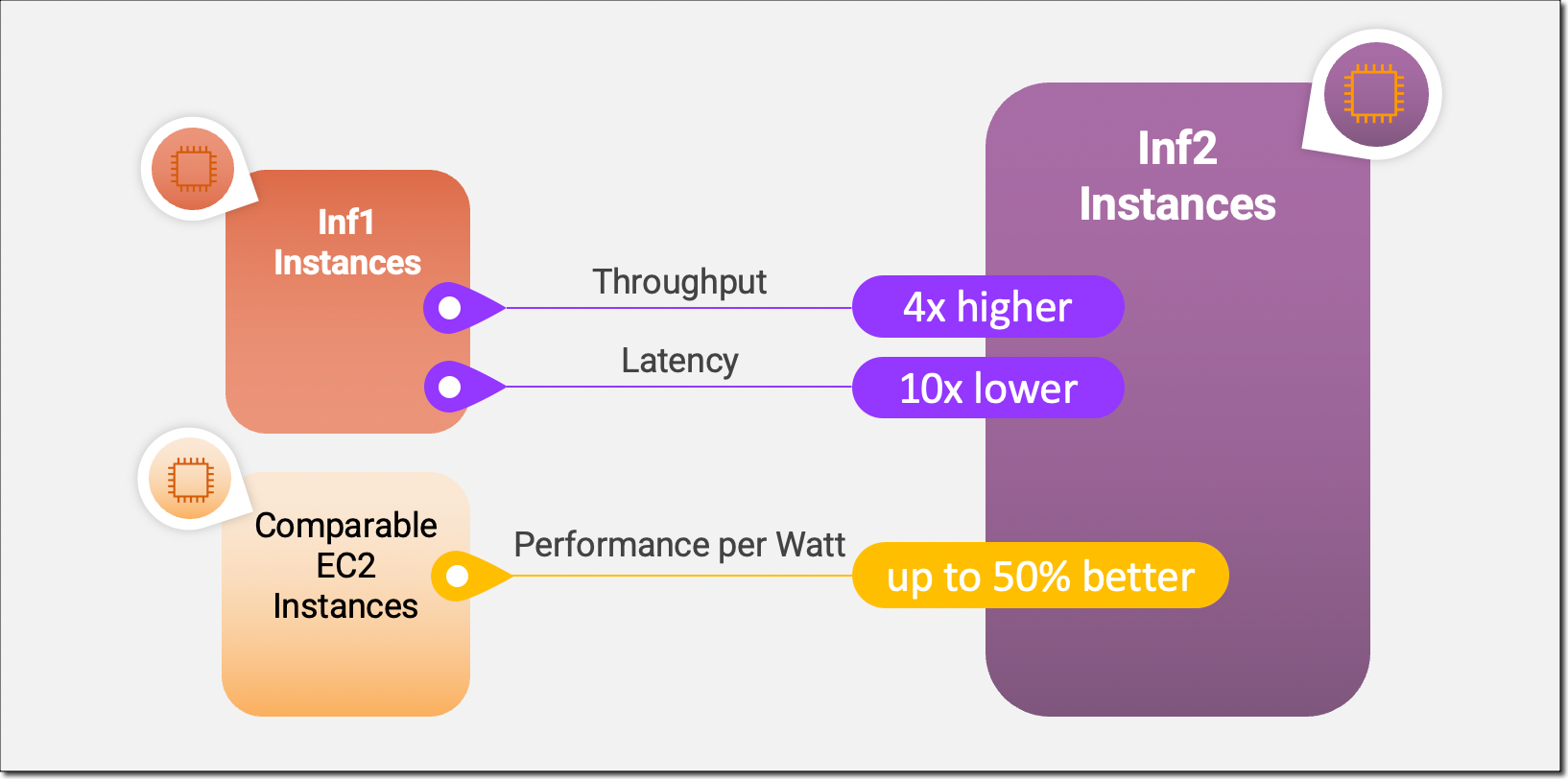Post Syndicated from Chris Munns original https://aws.amazon.com/blogs/compute/the-attendees-guide-to-the-aws-reinvent-2023-compute-track/
This post by Art Baudo – Principal Product Marketing Manager – AWS EC2, and Pranaya Anshu – Product Marketing Manager – AWS EC2
We are just a few weeks away from AWS re:Invent 2023, AWS’s biggest cloud computing event of the year. This event will be a great opportunity for you to meet other cloud enthusiasts, find productive solutions that can transform your company, and learn new skills through 2000+ learning sessions.
Even if you are not able to join in person, you can catch-up with many of the sessions on-demand and even watch the keynote and innovation sessions live.
If you’re able to join us, just a reminder we offer several types of sessions which can help maximize your learning in a variety of AWS topics. Breakout sessions are lecture-style 60-minute informative sessions presented by AWS experts, customers, or partners. These sessions are recorded and uploaded a few days after to the AWS Events YouTube channel.
re:Invent attendees can also choose to attend chalk-talks, builder sessions, workshops, or code talk sessions. Each of these are live non-recorded interactive sessions.
- Chalk-talk sessions: Attendees will interact with presenters, asking questions and using a whiteboard in session.
- Builder Sessions: Attendees participate in a one-hour session and build something.
- Workshops sessions: Attendees join a two-hour interactive session where they work in a small team to solve a real problem using AWS services.
- Code talk sessions: Attendees participate in engaging code-focused sessions where an expert leads a live coding session.
To start planning your re:Invent week, check-out some of the Compute track sessions below. If you find a session you’re interested in, be sure to reserve your seat for it through the AWS attendee portal.
Explore the latest compute innovations
This year AWS compute services have launched numerous innovations: From the launch of over 100 new Amazon EC2 instances, to the general availability of Amazon EC2 Trn1n instances powered by AWS Trainium and Amazon EC2 Inf2 instances powered by AWS Inferentia2, to a new way to reserve GPU capacity with Amazon EC2 Capacity Blocks for ML. There’s a lot of exciting launches to take in.
Explore some of these latest and greatest innovations in the following sessions:
- CMP102 | What’s new with Amazon EC2
Provides an overview on the latest Amazon EC2 innovations. Hear about recent Amazon EC2 launches, learn how about differences between Amazon EC2 instances families, and how you can use a mix of instances to deliver on your cost, performance, and sustainability goals. - CMP217 | Select and launch the right instance for your workload and budget
Learn how to select the right instance for your workload and budget. This session will focus on innovations including Amazon EC2 Flex instances and the new generation of Intel, AMD, and AWS Graviton instances. - CMP219-INT | Compute innovation for any application, anywhere
Provides you with an understanding of the breadth and depth of AWS compute offerings and innovation. Discover how you can run any application, including enterprise applications, HPC, generative artificial intelligence (AI), containers, databases, and games, on AWS.
Customer experiences and applications with machine learning
Machine learning (ML) has been evolving for decades and has an inflection point with generative AI applications capturing widespread attention and imagination. More customers, across a diverse set of industries, choose AWS compared to any other major cloud provider to build, train, and deploy their ML applications. Learn about the generative AI infrastructure at Amazon or get hands-on experience building ML applications through our ML focused sessions, such as the following:
- CMP206 | Behind-the-scenes look at generative AI infrastructure at Amazon
Learn how to power performant generative AI applications while keeping costs under control. Get a behind-the-scenes look at how purpose-built infrastructure from AWS including AWS Trainium and AWS Inferentia2 are used by Amazon teams. - CMP329-R | PyTorch best practices for generative AI & LLM inference architectures
Understand best practices for using PyTorch to deploy Large Language Models (LLMs) on a cluster of Amazon EC2 Inf2 instances managed by Amazon Elastic Kubernetes Service (EKS). - CMP402 | Build a generative AI chatbot using your own data with Amazon Titan
Build and deploy a generative AI-powered chatbot on AWS using AWS Inferentia, AWS Trainium, Amazon SageMaker, Amazon Bedrock, Amazon S3, and Amazon OpenSearch Service.
Discover what powers AWS compute
AWS has invested years designing custom silicon optimized for the cloud to deliver the best price performance for a wide range of applications and workloads using AWS services. Learn more about the AWS Nitro System, processors at AWS, and ML chips.
- CMP306 | Deep dive into the AWS Nitro System
Delve further into the design, architecture, and new innovations to the AWS Nitro platform in this session. - CMP309 | Compute innovations enabled by the AWS Nitro System
Deep dive in to the AWS Nitro System, the underlying platform for modern EC2 instances, the Nitro System, which has allowed AWS to innovate faster, further reduce your costs, and deliver increased security. - CMP313 | AWS Graviton: The best price performance for your AWS workloads
Learn more about AWS Graviton, hear customer stories about recent Graviton adoptions, how you can migrate your workloads to Graviton while saving cost, and gaining sustainability benefits.
Optimize your compute costs
At AWS, we focus on delivering the best possible cost structure for our customers. Frugality is one of our founding leadership principles. Cost effective design continues to shape everything we do, from how we develop products to how we run our operations. Come learn of new ways to optimize your compute costs through AWS services, tools, and optimization strategies in the following sessions:
- CMP207 | Capacity, availability, cost efficiency: Pick three
Use AWS strategies such as using attribute-based instance type selection, prioritizing operational flexibility, and Amazon EC2 Flex instances to help you get compute resources, when you need them, while keeping cost under control. - CMP211 | Smart savings: Amazon EC2 cost-optimization strategies
Discover the basics of cost optimization from AWS Savings Plans and Amazon EC2 Auto Scaling to more advanced strategies like Amazon EC2 Spot Instances, AWS Graviton, automation, and more. - CMP406 | Reduce costs and improve sustainability with AWS Graviton
Learn how using AWS Graviton based instances can provide up to 40% better price performance over comparable current-generation instances for a wide variety of workloads.
Check out workload-specific sessions
Amazon EC2 offers the broadest and deepest compute platform to help you best match the needs of your workload. More SAP, high performance computing (HPC), ML, and Windows workloads run on AWS than any other cloud. Join sessions focused around your specific workload to learn about how you can leverage AWS solutions to accelerate your innovations.
- CMP103 | Bring your small business to the cloud with Amazon Lightsail
Join to learn how you can quickly deploy and configure a WordPress blog, point-of-sale system, ecommerce site, or remote Windows desktop on AWS for a simple monthly price. - CMP203 | Scaling SAP HANA workloads on AWS
Discover how AWS SAP HANA customers benefit from the flexibility and reliability of the AWS Cloud. learn how you can migrate your mission-critical SAP HANA workloads. - CMP213 | Confidently run your production HPC workloads on AWS
Explore the HPC portfolio of services and products available in the AWS Cloud. Learn how customers can scale simulations and modeling and other memory- and data-intensive technical workloads. - CMP318 | Build a spatial data lake with Visual Asset Management System
Get a hands-on look at how to use the open source Visual Asset Management System (VAMS), built by AWS, to deploy a foundation for spatial data lakes, helping business units better collaborate and use 3D data while avoiding redundancies. - CMP333 | Accelerate Apple application development with Amazon EC2 Mac instances
Dive deep into best practices to automate the provisioning, configuration, and scaling of your Amazon EC2 Mac instances.
Hear from AWS customers
AWS serves millions of customers of all sizes across thousands of use cases, every industry, and around the world. Hear customers dive into how AWS compute solutions have helped them transform their businesses.
- CMP212 | Sustainable compute: Reducing costs and carbon emissions with AWS
Learn how to build sustainable and cost-efficient cloud operations that align with your business goals and see how Adobe is leveraging AWS Graviton processors to do the same. - CMP214 | HPC on AWS for semiconductors and healthcare life sciences
See a demo of how organizations like Arm are using AWS for demanding simulation workloads. - CMP320 | Powering Peloton’s journey to personalization with AWS
Learn how Peloton’s solution architecture and technology stack uses Amazon EC2, Amazon S3, and Amazon EKS to build and serve individualized class recommendations in real time with low latency for a great user experience.
Ready to unlock new possibilities?
The AWS Compute team looks forward to seeing you in Las Vegas. Come meet us at the Compute Booth in the Expo. And if you’re looking for more session recommendations, check-out additional re:Invent attendee guides curated by experts.


 .NET Developer Day –
.NET Developer Day – 
 AWS Global Summits – Check your calendars and sign up for the AWS Summit close to where you live or work:
AWS Global Summits – Check your calendars and sign up for the AWS Summit close to where you live or work: 








